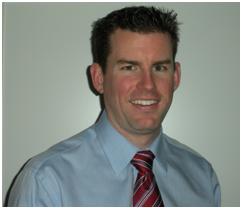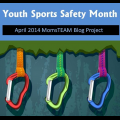In recognition of April as National Youth Sports Safety Month, MomsTeam has asked 30 experts to write a blog answering two questions: first, how or why did they get into their field, and second, how have they made a difference in the life of a youth athlete in the past year.
Today, we hear from Keith Cronin, a physical therapist at SSM-Select Physical Therapy in St. Louis, Missouri, and a MomsTeam expert.
By Keith Cronin, DPT, CSCS
How did I get into my field?
I got interested in physical therapy while playing sports in high school and college. During my athletic career, I discovered that I was quite the injury magnet. By the time I completed my undergraduate degree, and suffered through a whole range of injuries, from ankle sprains and torn hamstrings to herniated discs, and was ready to decide on graduate school, becoming a physical therapist seemed like a no-brainer.
Following graduation, I found not surprisingly, given my own long history of sports injuries, that I related very well to injured athletes, and am able to provide the necessary care and advice they need during the rehabilitation process to be able to return to sports, especially the ones who stubbornly resist a PT's advice, as I had done! 
How have I made a difference in a young athlete's life?
About 8 months ago, a softball pitcher arrived in my clinic with what was diagnosed as rotator cuff tendonitis. She was her team's number one starter, and losing her had an immediate and detrimental impact on their won-loss record. When, after 3 weeks of treatment, I noticed she was not getting better, I sent her back to the doctor. Throughout the course of her therapy sessions she constantly complained of pain with even the slightest movement of her arm, all the while talking a thousand words per minute. For someone in such pain, it was odd she liked coming to physical therapy so much. Compared to other medical professions, we are privileged to see patients 2-3x a week for over an hour each time. This means even the most difficult teenager, beset by pain and surging hormones, will often let slip what is really going on.
This particular athlete had a lot going on at home. Parents getting divorced, her team asking her every day when she would be back, fear of hurting herself again, and the usual laundry list of teenage drama. After realizing that her shoulder pain was just as much in the head as it was in the shoulder, I began to focus her on getting back to playing. I didn't have her do painful arm stretches, though I knew they would improve her shoulder, but would only reinforce that she was not happy with her current situation.
Instead, I increased the amount of time I spent asking her about her daily activities, focused on her return to the softball diamond, and generally just tried to keep everything as positive as possible. I also found out she was going to the swimming pool a lot, causing added irritation to her arm. A month later, she was back on a throwing program working towards getting back on the mound.
Keith J. Cronin is a physical therapist and center manager at SSM-Select Physical Therapy in St. Louis, Missouri, where he is currently developing sports injury prevention and coaching education community outreach programs. Keith has a Bachelor's in Exercise Science from Truman State University and a Doctorate of Physical Therapy (DPT) from Belmont University in Nashville, Tennessee, where the subject of his doctoral thesis was on identifying elbow injury risk among softball pitchers, and his course of study included a physical therapy clinical rotation at Champion Sports in Birmingham, Alabama under the direction of world-reknowned orthopedic surgeon, Dr. James Andrews. A former college baseball player, American Legion baseball coach, and personal trainer, Keith has extensive experience working both to rehabilitate injuries suffered by and improve the performance of young athletes. He lives in the St. Louis area with his wife and daughter, and can be reached by e-mail at keithjcroninPT@gmail.com.



















